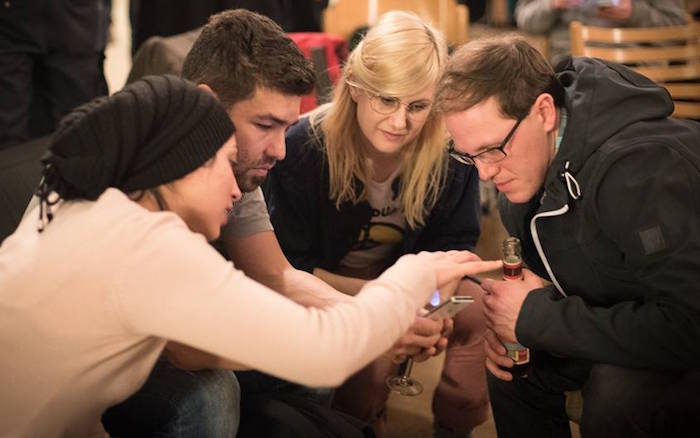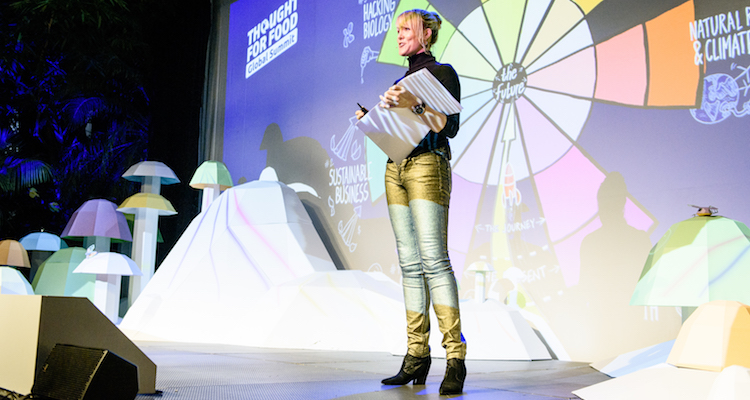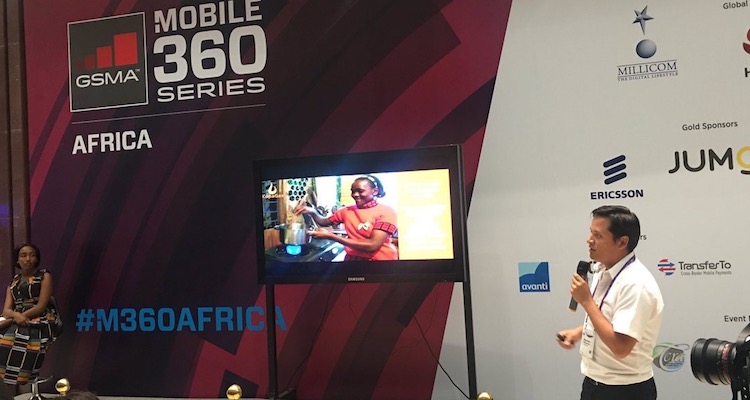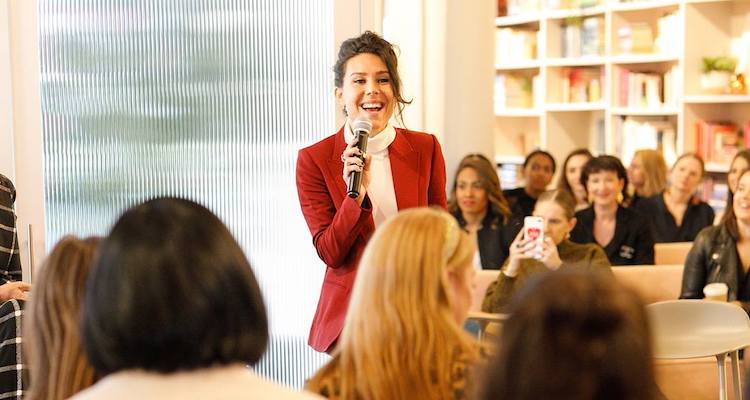Listen Now
It starts with something small, people coming together and creating community, getting to know each other. And then huge things grow.“ You can go ahead and admit it your yourself – I won’t judge, because I do it too – that its nice when you have a substantial number of people “like” or follow something you’ve posted on social media. For most of us, this revolves around a picture of a vacation, something the kids did, or random silliness we happened across on the street. But what if your post went viral? I mean really viral… so much so that it resulted in you receiving so much feed back that you decided to start an organization to fulfill the need that you just uncovered? Well, this is exactly what happened to Annamaria Olsson, who is my guest for the 118th episode of the Terms of reference podcast. As you’ll hear in the episode, she wrote a post that launched a vibrant growing organization called Give Something Back To Berlin, that seeks to connect people in the city, especially migrants who are looking for ways to thrive in a place that has welcomed them with open arms, but may not necessarily with all the resources they need. Annamaria is a Swedish journalist and writer, who also has 10 years of NGO experience. As you’ll hear in the podcast, she tells you her story much better than I ever could. You can connect with Annamaria here: http://www.givesomethingbacktoberlin.com
IN TOR 118 YOU’LL LEARN ABOUT:
- About Give Something Back To Berlin (GSBTB), a Facebook post that became a nonprofit with thousands of volunteers.
- About the lack of technological tools put at the service of integration and acceptance.
- About “soft integration” (language and a job) versus a real connection with the community.
- About the German approach to planning and why it might have failed for the migrant crisis; and why for Annamarie “plans are a luxury.”
- The difficulties in showing measurable results in aspects like empathy, trust, prejudice.
OUR CONVERSATION INCLUDES THE FOLLOWING:
Organizations
- GSBTB
Topics
- Multicultural integration
- Migration
- European Refugee Crisis
- Social Media
- Art (including Cooking)
Places
- Berlin
- Stockholm, Sweden
EPISODE CRIB NOTES
From a social media post to a full-fledged organization Works in a refugee home that gives space to nonprofits. GSBTB is the first one. “It’s a big community house with lots of activities.” GSBTB story “No grand plan.” Annamaria writes a post on Facebook. She was a journalist in Stockholm writing about xenophobia. “There is little innovation of practical tools to connect migrants with the community,” which hinders their ability to become forces of good. There is segregation in Europe’s neighborhoods. Her post goes viral. While “no grand plan,” it was a proposal of sorts. “Many people had the same feelings as I had.” She started to meet with lots of people over the months, until a project was ready to take off. The concept An English-speaking site where people offer their skills to organizations with social causes in Berlin. This helps foreigners to get involved in the community, volunteer. A signal to the city and locals to “show immigrants have a lot to share and are a positive force, as long as there is a space.” Why was is necessary, and why in Berlin Things have happened and changed lately. At first, there was some skepticism, even a little backlash, from people and officials. It defied the idea of cooperation. Then the migrant crisis crept up. GSBTB was in a beneficial place to intervene. Migrants tend to have ideas, creativity and political awareness. GSBTB takes their “creativity” to generate synergies with the city. Volunteer model At the beginning it redirected volunteers to existing projects, “not to reinvent the wheels.” It turned out to be insufficient. “Innovation didn’t happen there.” They started to develop projects on their own, clocking thousands of participants and volunteer hours. GSBTB-type projects 2013: Refugee cooking group. They meet with protesting groups. Refugees can’t always make their own food in their homes. They start meeting weekly. Today there are events like food fairs in larger scales. It sparked professional networking and job opportunities. Could it have been that easy? Open Art Shelter. It works inside refugee homes, with art activities. Mixed groups of volunteers is what makes it work. People with migrant backgrounds. “I’m not ethnically German. I had to learn the language.” A spectrum of similar life experiences. The important thing is that they help each other, that everyone is at the same level, that there are no barriers, that different people feel at home in the same place. “We are very flexible,” along with no master plan. “Projects are developed with the people,” parts of the project were scrapped on day one. New ideas pop up. Work in one of the worst refugee homes in Berlin (maybe Germany) does not lend itself to a weekly schedule. “You just have to be flexible.” Volunteers need frustration control training. Volunteers also do not have reliable schedules. Network effects People can make proposals online. GSBTB links people together who want to try similar things. “A very active network,” where ideas and skills are matched proactively. A couple who met in GSBTB got engaged. Most Berliners start thinking about learning German and getting a job is all it takes for an immigrant to belong. “It is actually about real connection.” What will Annamarie give back next? “Today we are doing a yearly plan.” “This is a luxury.” This was the year of the Refugee crisis. In most European cities. Learning to be organized and strategic as they go. People have ideas and energy, but not every idea makes sense. Hurdles and challenges Social enterprising and funding. To an extent. “It began from immigrants to immigrants.” “Grassrooted. Germans are not used to thinking this way.” “In Germany, you sit down, you write a plan.” GSBTB is the other way around. Germans are realizing that action is urgent and necessary even if there’s no plan. Going beyond “soft integration” is about creating trust, “connections” overriding prejudice. “It is very hard to measure.” Breakthroughs “Visible results might take a couple of years.” Officials have toured GSBTB. “Government invest mostly in soft integration.” Over 40 nationalities in projects, not only refugees. Brexit shows how migration is seen. Funding today At first it was only private donors by design. Today, company partnerships and institutional funding, which allows long-term planning. Potential for government funding. The initiative could be replicated across cities. Some local governments want help “But Berlin is a very special place. [GSBTB] might not have been possible somewhere else.” Annamaria eyes “I tried to be shut off,” not to get too caught up. Work can become heavy. Art Museums, Literature. “What cool things come up when two people from different cultures meet each other.”Please share, participate and leave feedback below!
If you have any feedback you’d like to share for me or Annamaria, please leave your thoughts in the comment section below! I read all of them and will definitely take part in the conversation. If you have any questions you’d like to ask me directly, head on over to the Ask Stephen section. Don’t be shy! Every question is important and I answer every single one. And, if you truly enjoyed this episode and want to make sure others know about it, please share it now:[feather_share show=”facebook, twitter, linkedin, google_plus” hide=”reddit, pinterest, tumblr, mail”]
Also, ratings and reviews on iTunes are very helpful. Please take a moment to leave an honest review for The TOR Podcast!




